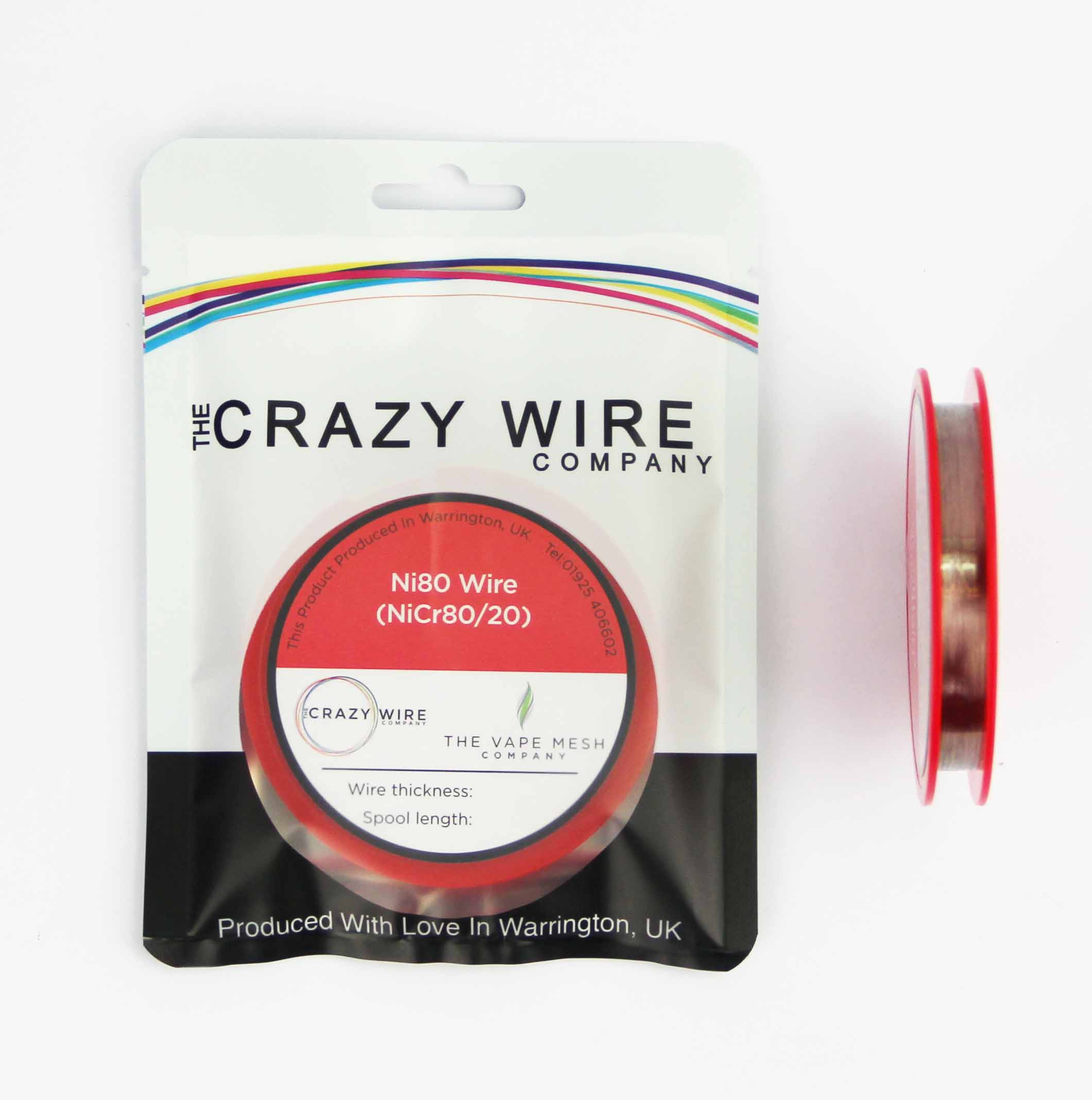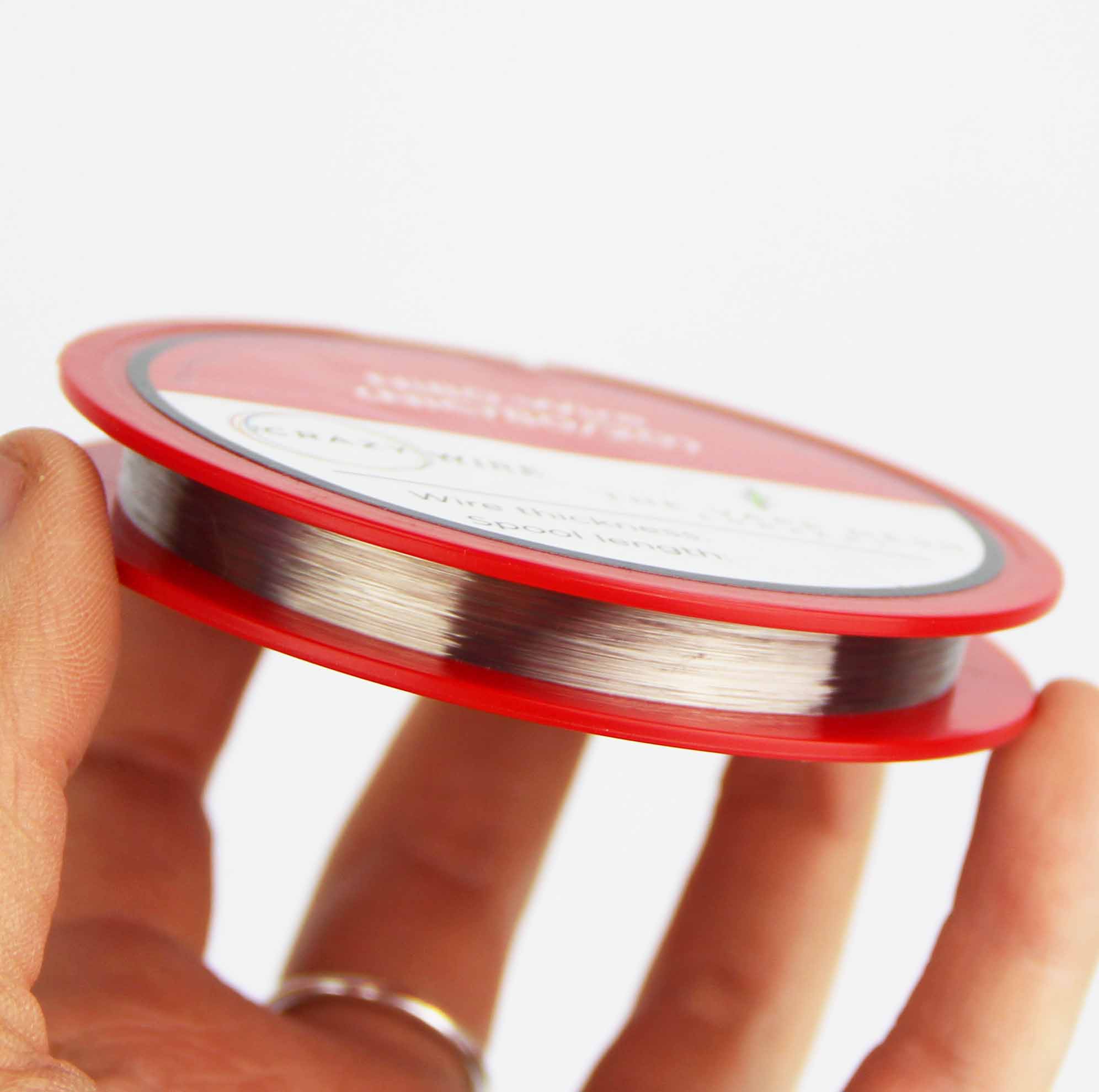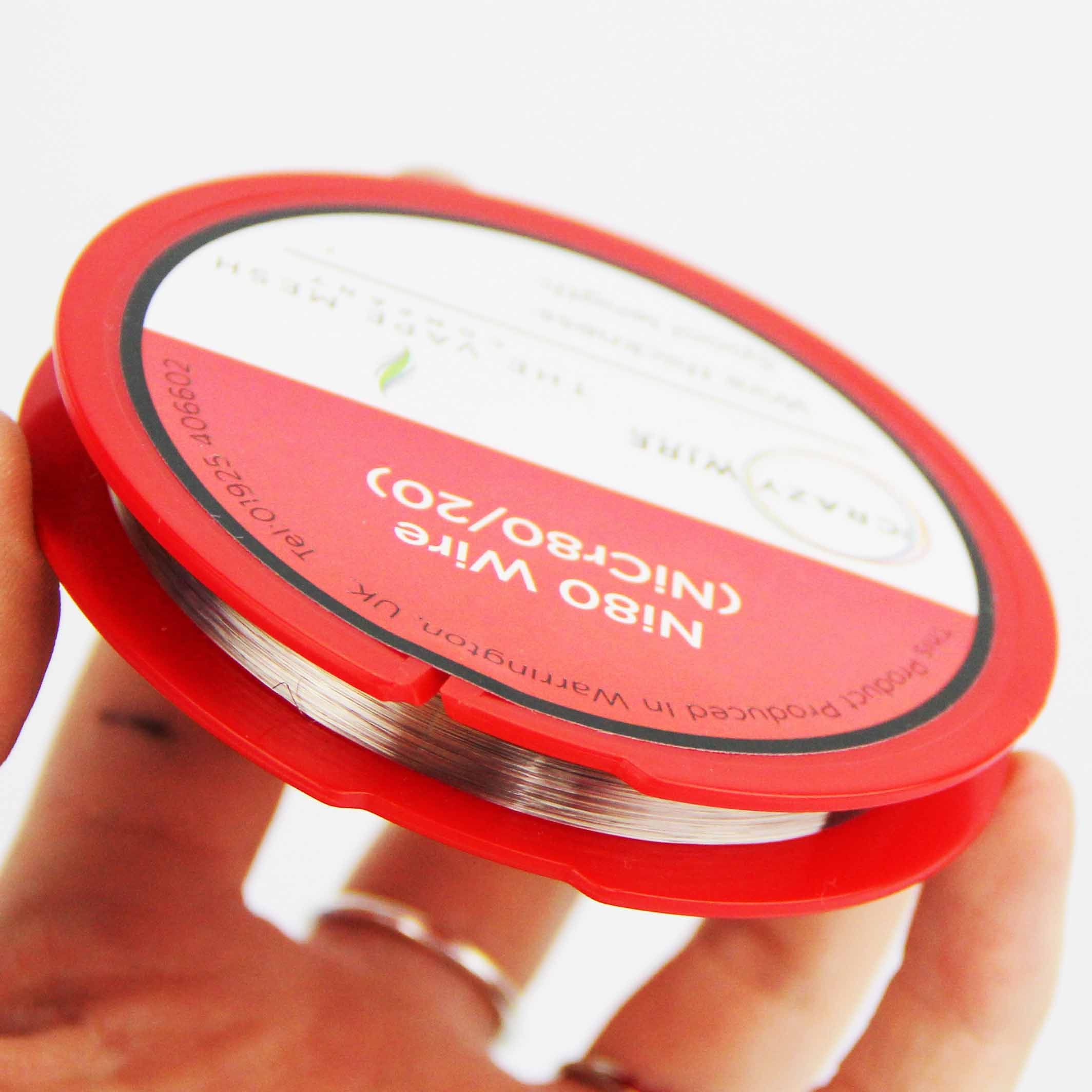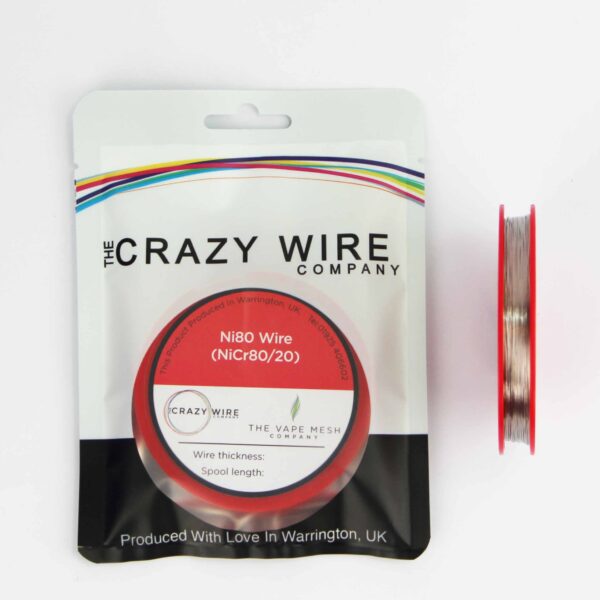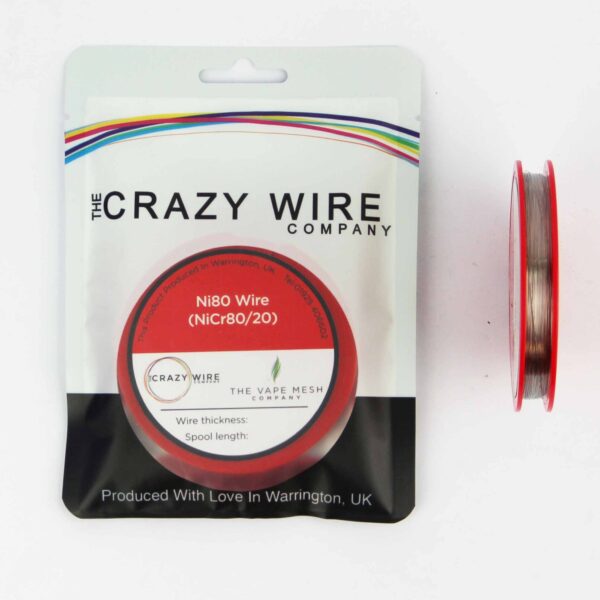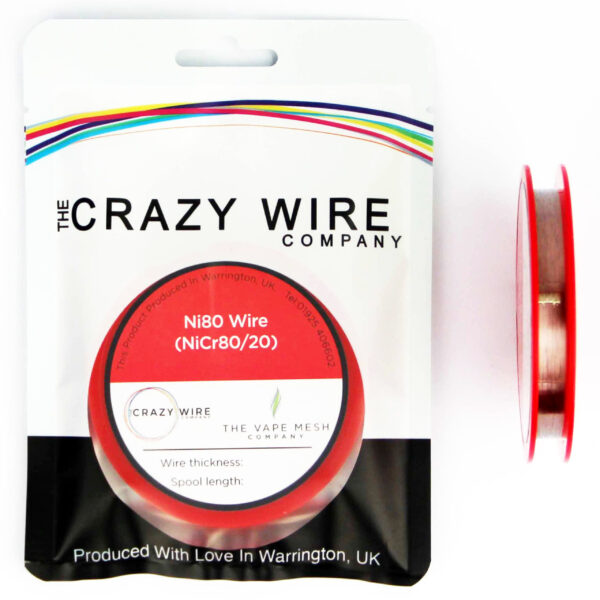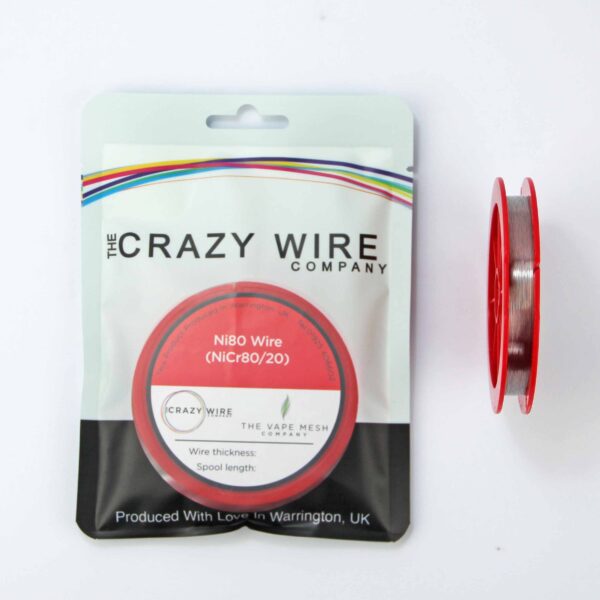Description
0.09mm Thin Nichrome Heat Resistant Wire
The Crazy Wire Company are best known as suppliers of top quality heat resistant wire. We have enormous stock levels at all times, as we use this wire to weave our high-specification woven mesh products. Our brilliant staff are experts in producing our spools of round wire on our 6 rapid action winding machines. All spools are produced to carry a little extra length to make up for any waste when handling the product.
The 0.09mm (39 AWG) Ni80 nichrome heat resistant wire stands as a pivotal component in various applications demanding efficient thermal performance. A blend of nickel and chromium, this heat-resistant wire offers exceptional resilience against elevated temperatures, making it ideal for applications that require even heat distribution. The thin profile at 0.09mm ensures precision, while the 39 AWG specification can be adapted to a wide range of requirements. Because Ni80 alloy has superior oxidation resistance, the wire can withstand repetitive thermal cycles for a longer lifetime.
As a result of its electrical conductivity, this product is an obvious choice for electronics and heating elements. Additionally, its consistent dissipation makes it useful for applications such as toasters, space heaters, and even industrial furnaces. Due to its flexibility and endurance, hobbyists frequently use it to craft intricate wire art and jewelry. Many laboratories and institutions use this wire for experiments and processes that require accurate thermal measurements.
The 0.09mm diameter of the wire means that it has a small cross-sectional area, which can result in higher resistance compared to wires with larger diameters. The resistance of the wire will also depend on its length and temperature, as well as the specific composition of the nickel-chromium alloy used to make the wire.
Key product details:
- Diameter – 0.09mm (90 Micron – 39 AWG Wire)
- Ohms/m – 173.28
- Technical Specification:
- Ni – Rest
- Cr – 20.0 – 23.0
- Fe – <1.0
- Max Continuous Service Temp Of Element – 1200
- Micrographic Structure – Austenite
- Magnetic Properties – Nonmagnetic
- Electrical resistance is high
- Corrosion resistance is high
Why Use The Crazy Wire Company
- Quality of products: The Crazy Wire Company always offer high-quality products that meet industry standards and customer expectations.
- Selection: We offer a wide variety of wire products and sizes to meet the diverse needs of our customers. We have more than 600 products available through our site and counting.
- Price: We always offer the best value possible. Our wires are available as part of our major weaving processes, so it is bought at the best possible rate.
- Availability: Our products are kept in house and are ready to ship immediately.
- Customer service: Our experienced staff help our customers feel confident in their purchases and provide assistance when required.
What Else Is Available?
We do not only offer Ni80 round wire. We also have a huge range of KA1 and stainless steel round wire in immediate stock too.
Ribbon wire and flat wire are stocked for immediate dispatch too.
FAQs
What Resistance Do Wires Have?
Wires have electrical resistance, which is the property that resists the flow of electric current. The resistance of a wire depends on several factors, including its material, cross-sectional area, length, and temperature.
Typically, metals such as copper and aluminium have low resistance and are used for electrical wiring due to their good conductivity. The resistance of a wire increases with its length and decreases with its cross-sectional area. The temperature of a wire can also affect its resistance, as some materials have a positive temperature coefficient of resistance, meaning that their resistance increases with temperature.
What Is High Resistance Wire?
High resistance wire is a type of wire that has a higher resistance to the flow of electrical current compared to wires with lower resistance. This type of wire is typically made from materials with higher resistivity, such as nickel-chromium or nickel-iron alloys, which are known for their high resistance and resistance stability at high temperatures.
High resistance wire is used in various applications where resistance to electrical current is important, such as in heating elements, temperature sensors, and in resistance-based sensing systems. It’s also used in resistance welding and as a current-limiting device in electrical circuits.
What Is Low Resistance Wire?
Low resistance wire is a type of wire that has a lower resistance to the flow of electrical current compared to wires with higher resistance. This type of wire is typically made from materials with low resistivity, such as copper or aluminium, which are known for their good electrical conductivity.
Low resistance wire is used in various applications where low resistance and good electrical conductivity are important, such as in electrical wiring, power transmission, and in electrical circuits where high current flow is required. The low resistance of these wires allows for efficient transfer of electrical energy, minimizing power losses and ensuring safe and reliable operation of electrical systems.
What Affects Wire Resistance?
There are several factors that can affect the resistance of a wire, including:
- Material: The type of material the wire is made of is one of the most important factors that determine its resistance. Metals with high conductivity, such as copper and aluminium, have low resistance, while metals with low conductivity, such as nickel-chromium or nickel-iron alloys, have higher resistance.
- Cross-sectional area: The cross-sectional area of a wire directly affects its resistance. The larger the cross-sectional area of the wire, the lower its resistance.
- Length: The length of a wire is another important factor that affects its resistance. The longer the wire, the higher its resistance.
- Temperature: The temperature of a wire can also affect its resistance. Some materials have a positive temperature coefficient of resistance, meaning that their resistance increases with temperature.
- Diameter: The diameter of a wire affects its resistance, with smaller diameter wires having higher resistance than larger diameter wires of the same material and length.
Check out our blog ‘what is nichrome’ for more information on ni80 wire in general. Our goal for our blogs and help guides is to answer as many questions as possible to help to explain the possibilities of mesh to our customers.
We also offer similar products through our highly popular eBay store, check us out there too.
Contact our team today if you have any questions at all. We are always really keen to help in any way that we can.

